MARP Membership Meeting: Higher Speeds, Chicago Union Station Improvements

On Saturday, March 16th, the Michigan Association of Railroad Passengers (MARP) held its first in-person meeting of 2024 inside the John D. Dingell Transit Center in Dearborn.
Amtrak Updates
History and Funding Overview
Marc Magliari, Senior Public Relations Manager at Amtrak , provided an overview of the history of Amtrak and its federal funding model. Notable to Michigan riders is the funding model for the Wolverine, which was historically a federally-subsidized “long distance” route before it became a state-operated corridor in 2008, with MDOT taking ownership. MARP has been tracking on-time performance independently, which Amtrak has been following alongside its own reliability metrics. As most Amtrak passengers will know, the single largest issue affecting reliability is freight traffic interference. Amtrak continues to make legal headway in holding host railroads across the country accountable for delays.
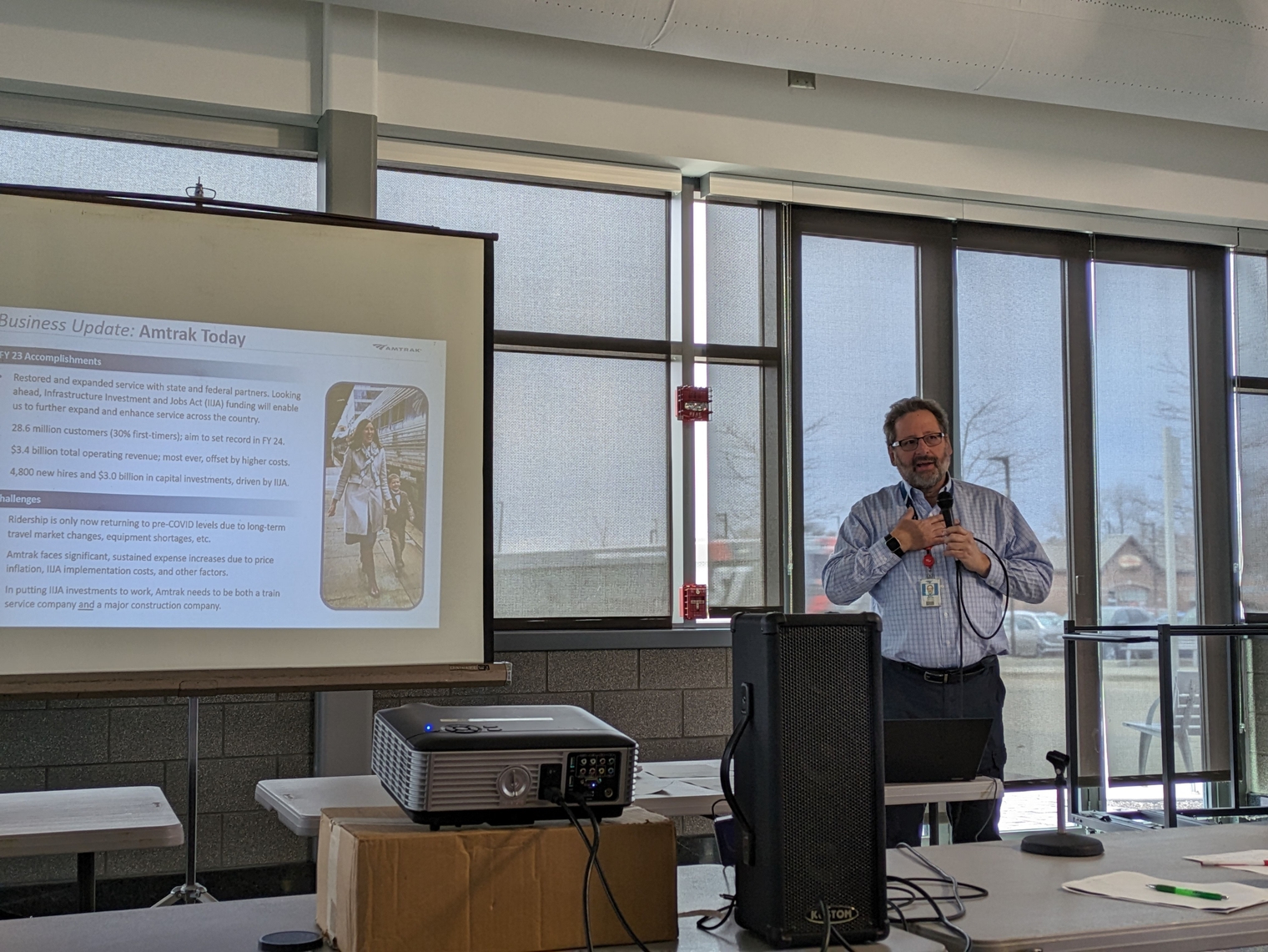
Magliari notes that of all transportation providers, Amtrak has the most transparent funding in the federal budget. Operations and capital funding are a component of annual Transportation, Housing, and Urban Development (T-HUD) appropriations.
Upcoming Track Work, Speed Increases on the Wolverine
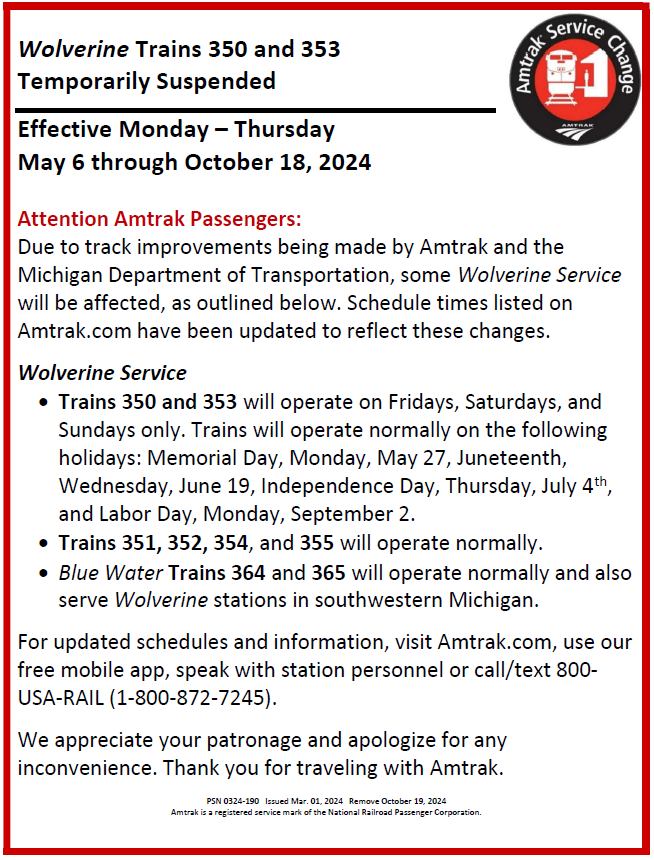
This summer, Wolverine Trains 350 and 353 (the 6:45am eastbound departure from Chicago and the 8:50am westbound departure from Pontiac, respectively) will be suspended Monday through Thursday from May 6th to October 18th , with exceptions for major holidays, for track work. Curve easing will take place between Jackson and Ypsilanti which will ultimately raise top speeds, though not to a full 110mph due to the nature of the track’s many Huron River crossings and close proximity to the station stop in Ann Arbor.
As a separate improvement project, with a timeframe yet to be determined, the corridor between Ypsilanti and Dearborn will be upgraded to allow for full 110mph service.
CHIP: The Chicago Hub Improvement Program
In January, Amtrak ran a survey asking frequent users of Chicago Union Station what they would like to see in a redesign. The station has largely outgrown its capacity, as the last major remodel of the interior was completed in the 90s. Amtrak has secured an additional $40 million for CHIP on top of existing federal dollars; a story will run in the Chicago Tribune in the coming days with additional information.
Chicago Union Station, and by extension the trackage used to connect trains to Michigan-owned corridors, is the bottleneck which currently prevents any frequency increases on the Wolverine, Blue Water, and Pere Marquette. There are, however, talks of running additional Wolverine trains which would short-turn in Kalamazoo .
New Café Cars, Assigned Seating in Business Class
The new Siemens Venture café cars, designed to allow wheelchair and mobility device access per Amtrak, began test runs last week. They are expected to enter service on Amtrak Midwest routes by the end of the current fiscal year pending fulfillment of additional shipments from Sacramento.
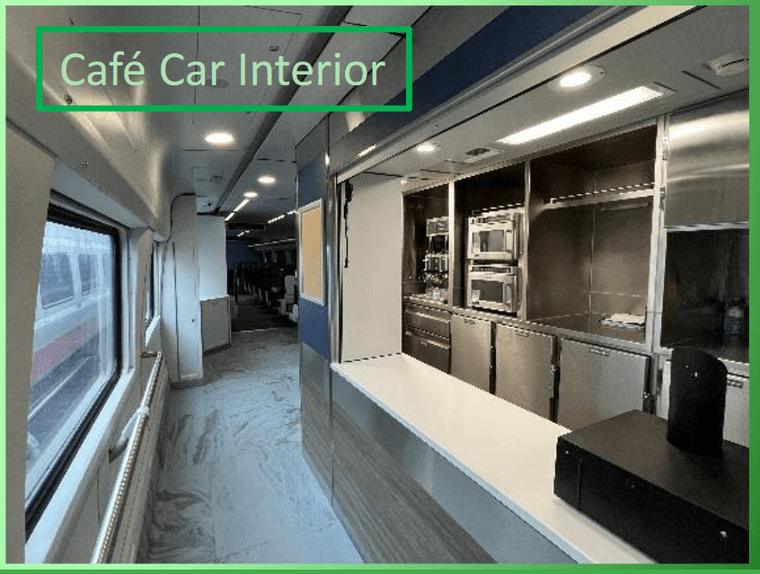
(Source: Next Generation Equipment Committee )
The café cars will offer 34 coach seats rather than business class as with the current Amfleet and Horizon food service cars. Standalone business class Venture coaches, dedicated entirely to 2-by-1 seating, are already in service on Amtrak Midwest routes. The in-car dining table setup is not currently clear.
Magliari also noted that in the near future, business class on Amtrak Midwest will move to an assigned seating model.
Other Member Business
Nick Little, Managing Director of the Railway Management Program at Michigan State University, recently met with Governor Whitmer and the Michigan Economic Development Corporation regarding the university’s interest in increased passenger rail access for students. Conversations surrounding a potential Detroit to Grand Rapids line are intensifying, both within the Governor’s office and the state legislature’s new Transit Caucus .
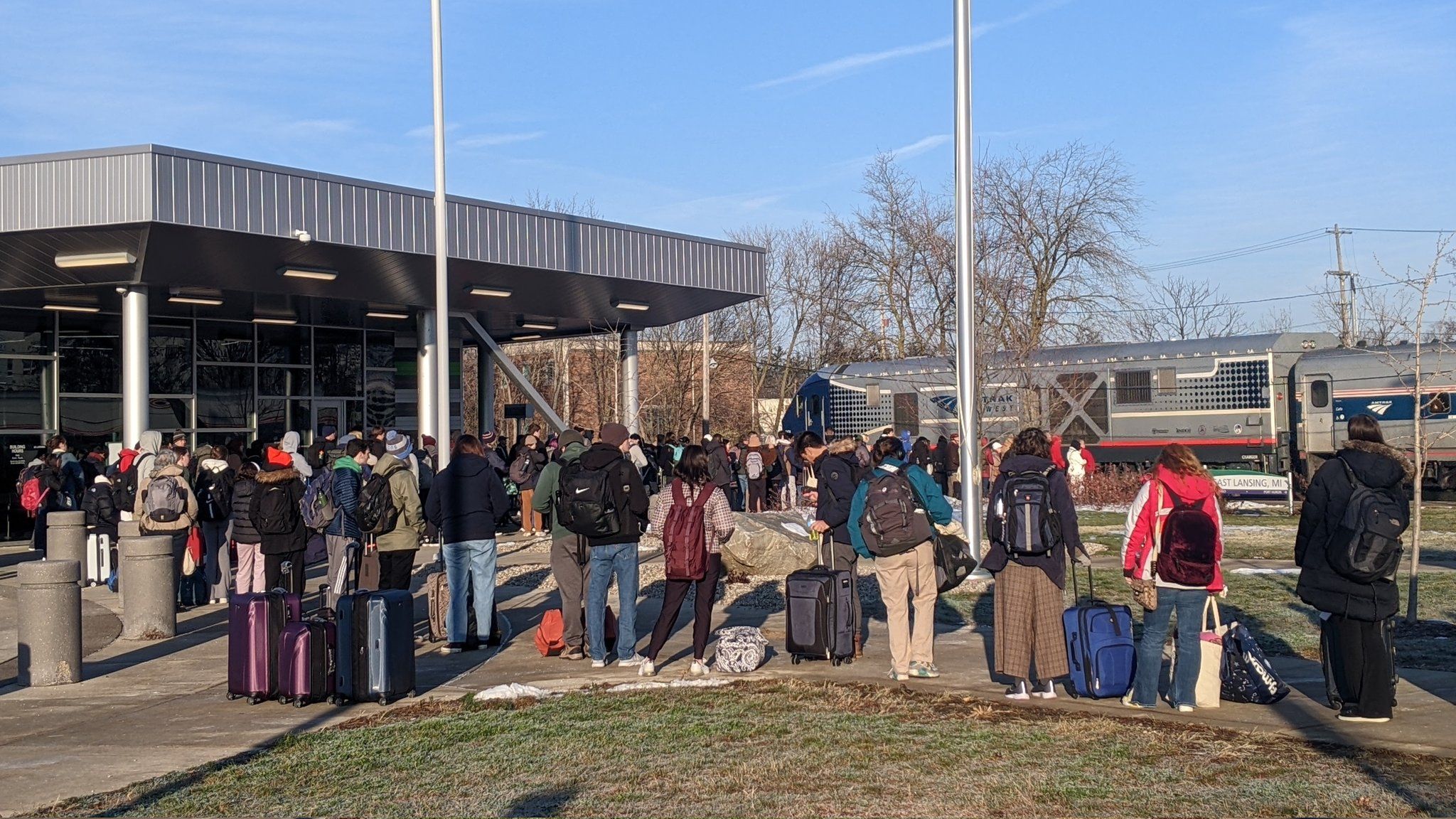
MSU students form a queue to board the Blue Water to Chicago, which currently runs only once daily, on November 23rd, 2022.
Clark Charnetski briefly spoke on MDOT’s New Center station plans in Detroit, which have been indefinitely paused . The state has long-owned the Howard Street bus terminal in Detroit, served by Greyhound, Indian Trails , and Barons Bus, which was not sold to private developers as was the case with many other stations across the country following the FlixBus-Greyhound merger. Future plans for this terminal and the New Center Amtrak station are currently unknown.
Members also noted that work on a second nonmotorized station underpass in Ann Arbor is ongoing as part of the Border to Border Trail, with expected completion in late 2024 or early 2025. Additionally, the City of Durand is running a pedestrian connectivity survey related to plans to build a nonmotorized rail crossing between Durand Union Station and the main village. The survey is open through March 31st.
I brought up the level boarding platform in Ann Arbor and asked members if there were any recent efforts to expand this setup to other stations across Michigan. Colloquially known as a “mini-high,” the Ann Arbor platform was installed in July 2015 and entered service that September as a pilot which has now become permanent. MARP member Yuri Popov noted that there have been calls for expansion in recent years .
Amtrak has its own goal of systemwide full accessibility by 2029 , though this does not necessarily mean level boarding will be brought to every station.
This "Setback Level Boarding Platform Prototype" (as the 2015 FRA grant calls it) cost $1.9M to install and was made permanent following a two-year pilot period. Installing this in the remaining 22 stations would cost $40M. We'd have $20M to spare. View original Tweet
A public safety message from Amtrak: In case of emergency, find the blue sign
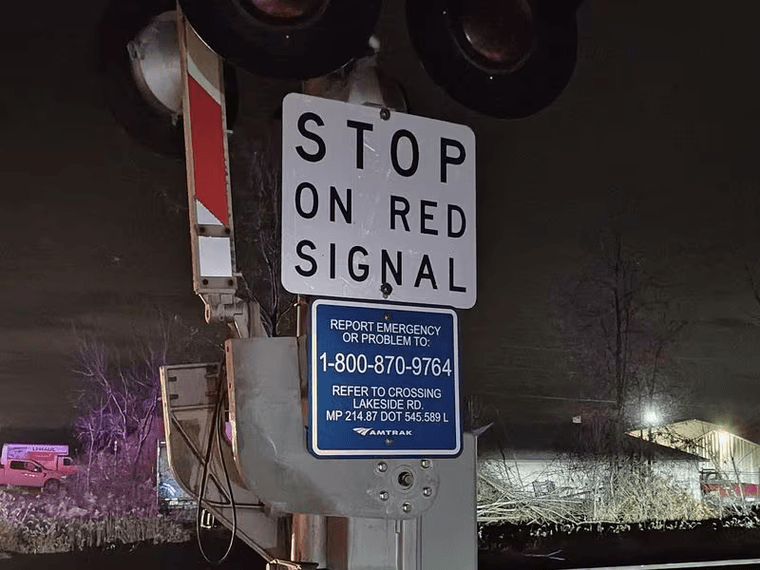
(Source: MLive / Amtrak)
Last November, a Wolverine train derailed after striking a car and a tow truck on a grade crossing in Berrien County outside New Buffalo. Several passengers were injured and multiple train cars were damaged, including an Amfleet café car which was determined to be a total loss as the structure of the car twisted upon impact. Other coach cars have only been repaired and returned to service just this week.
Neither local police nor emergency services were aware of the correct number to call in the event of a disabled vehicle or other emergency at a crossing. Ultimately, 911 dispatchers called in the incident to the wrong railroad, stopping the Pere Marquette a few miles away instead of the Wolverine. Had any parties involved called the correct emergency number posted on a large, square, blue sign attached to the crossing gates, the incident would have been avoided entirely.
Magliari urged all attendees to spread awareness of these signs to all Amtrak riders, railfans, community leaders, and anyone who happens to live near a grade crossing. During Rail Safety Week this September, Amtrak will be launching a large-scale public awareness campaign.
MARP is a membership-based 501(c)(3) advocacy association with over 200 members in good standing. Past meeting minutes are published online .